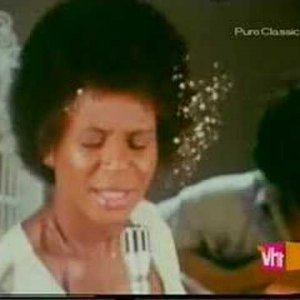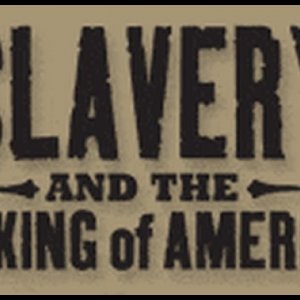- Feb 28, 2009
- 19,373
- 5,583
Does the Bible Say It's a Sin for Women to Wear Pants?
The Truth About Deuteronomy 22:5
by Jason Young
“The woman shall not wear that which pertaineth unto a man, neither shall a man put on a woman's garment: for all that do so are abomination unto the LORD thy God.” This verse -- Deuteronomy 22:5 -- is one of the most commonly quoted and debated verses in the Old Testament...
...The phrase “that which pertaineth,” or simply the word pertainethin the King James Version of the Bible, is translated from the Hebrew word keliy, which means “article, vessel, implement, or utensil.”1Translators commonly render keliy as weapon, armor or instrument in the Old Testament. The word man, in both the first and last part of Deut 22:5, is the Hebrew wordgebermeaning “man, strong man, or warrior (emphasizing strength or ability to fight).”2It is important to note that this is not the only word for manin Hebrew. Verse 13 of this very same chapter uses the Hebrew word'iysh,which is also translated manand means just that – “man, male (in contrast to woman, female).”3 It is apparent that Moses, when writing Deut 22:5, was quite intentionally not talking about a man in general, but a very specific kind of man – namely, a warrior or soldier. Considering this, perhaps a better translation of this verse would be as follows:
“The woman shall not put on [the weapons/armor of a warrior], neither shall a [warrior] put on a woman's garment: for all that do so are abomination unto the LORD thy God.”
Many scholars agree with this translation. Adam Clark, commenting on Deuteronomy, states,
“As the word...geber is here used, which properly signifies a strong man or man of war, it is very probable that armour is here intended; especially as we know that in the worship of Venus, to which that of Astarte or Ashtaroth among the Canaanites bore a striking resemblance, the women were accustomed to appear in armour before her.”4
John Gill in his Exposition of the Entire Bible sees a similar meaning in 22:5:
“...and the word [keliy] also signifies armour, as Onkelos renders it; and so here forbids women putting on a military habit and going with men to war, as was usual with the eastern women; and so Maimonides illustrates it, by putting a mitre or an helmet on her head, and clothing herself with a coat of mail; and in like manner Josephus explains it, 'take heed, especially in war, that a woman do not make use of the habit of a man, or a man that of a woman...'” (sic) 5
Rabbi Jon-Jay Tilsen of The United Synagogue of Conservative Judaism writes in an excerpt from an article entitled “Cross Dressing and Deuteronomy 22:5,”
“In another attempt to identify the quintessential 'men's items,' Rabbi Eliezer ben Jacob, quoted in the Talmud (edited about 800 C.E.), says, ‘What is the proof that a woman may not go forth with weapons to war?’ He then cites our verse [Deuteronomy 22:5], which he reads this way: ‘A warrior's gear may not be put on a woman’ (B. Naz. 59a). He reads kli gever [geber] as the homograph kli gibbor, meaning a ‘warrior's gear’.”
Rabbi Tilsen further states,
“This same understanding is followed by Midrash Mishlei (Proverbs) which contends that the Biblical character Yael in the Book of Judges kills General Sisera with a tent pin instead of a sword in order to comply with this law. It would have been 'unlady-like' for her to use a sword -- worse, a violation of the law -- because a sword is a man's tool...”
Considering the sheer specificity of Deut 22:5 and the precise nature of those things that are forbidden, Deut 22:5 is most likely ceremonial law rather than moral law, which would mean that it would have little, if any, implications for Christians today. Many believe, however, that this verse still applies to us today because this verse states that violators of this law are an abomination to God and that which was an abomination to God in the Old Testament would also be an abomination to God in the New Testament. However, the usage of the word abomination in Deut 22:5 does not necessarily make it a timeless moral law because any violation of God’s mandates is an abomination to Him, whether it is a violation of ceremonial law or moral law.
Furthermore, Deut 22:5 is placed squarely in the middle of, and is completely surrounded by, ceremonial laws. If it is indeed a principle to be literally followed today, why would God choose to bury this verse in the middle of what are clearly ceremonial laws?.....
continued...http://www.actseighteen.com/articles/women-pants.htm
The Truth About Deuteronomy 22:5
by Jason Young
“The woman shall not wear that which pertaineth unto a man, neither shall a man put on a woman's garment: for all that do so are abomination unto the LORD thy God.” This verse -- Deuteronomy 22:5 -- is one of the most commonly quoted and debated verses in the Old Testament...
...The phrase “that which pertaineth,” or simply the word pertainethin the King James Version of the Bible, is translated from the Hebrew word keliy, which means “article, vessel, implement, or utensil.”1Translators commonly render keliy as weapon, armor or instrument in the Old Testament. The word man, in both the first and last part of Deut 22:5, is the Hebrew wordgebermeaning “man, strong man, or warrior (emphasizing strength or ability to fight).”2It is important to note that this is not the only word for manin Hebrew. Verse 13 of this very same chapter uses the Hebrew word'iysh,which is also translated manand means just that – “man, male (in contrast to woman, female).”3 It is apparent that Moses, when writing Deut 22:5, was quite intentionally not talking about a man in general, but a very specific kind of man – namely, a warrior or soldier. Considering this, perhaps a better translation of this verse would be as follows:
“The woman shall not put on [the weapons/armor of a warrior], neither shall a [warrior] put on a woman's garment: for all that do so are abomination unto the LORD thy God.”
Many scholars agree with this translation. Adam Clark, commenting on Deuteronomy, states,
“As the word...geber is here used, which properly signifies a strong man or man of war, it is very probable that armour is here intended; especially as we know that in the worship of Venus, to which that of Astarte or Ashtaroth among the Canaanites bore a striking resemblance, the women were accustomed to appear in armour before her.”4
John Gill in his Exposition of the Entire Bible sees a similar meaning in 22:5:
“...and the word [keliy] also signifies armour, as Onkelos renders it; and so here forbids women putting on a military habit and going with men to war, as was usual with the eastern women; and so Maimonides illustrates it, by putting a mitre or an helmet on her head, and clothing herself with a coat of mail; and in like manner Josephus explains it, 'take heed, especially in war, that a woman do not make use of the habit of a man, or a man that of a woman...'” (sic) 5
Rabbi Jon-Jay Tilsen of The United Synagogue of Conservative Judaism writes in an excerpt from an article entitled “Cross Dressing and Deuteronomy 22:5,”
“In another attempt to identify the quintessential 'men's items,' Rabbi Eliezer ben Jacob, quoted in the Talmud (edited about 800 C.E.), says, ‘What is the proof that a woman may not go forth with weapons to war?’ He then cites our verse [Deuteronomy 22:5], which he reads this way: ‘A warrior's gear may not be put on a woman’ (B. Naz. 59a). He reads kli gever [geber] as the homograph kli gibbor, meaning a ‘warrior's gear’.”
Rabbi Tilsen further states,
“This same understanding is followed by Midrash Mishlei (Proverbs) which contends that the Biblical character Yael in the Book of Judges kills General Sisera with a tent pin instead of a sword in order to comply with this law. It would have been 'unlady-like' for her to use a sword -- worse, a violation of the law -- because a sword is a man's tool...”
Considering the sheer specificity of Deut 22:5 and the precise nature of those things that are forbidden, Deut 22:5 is most likely ceremonial law rather than moral law, which would mean that it would have little, if any, implications for Christians today. Many believe, however, that this verse still applies to us today because this verse states that violators of this law are an abomination to God and that which was an abomination to God in the Old Testament would also be an abomination to God in the New Testament. However, the usage of the word abomination in Deut 22:5 does not necessarily make it a timeless moral law because any violation of God’s mandates is an abomination to Him, whether it is a violation of ceremonial law or moral law.
Furthermore, Deut 22:5 is placed squarely in the middle of, and is completely surrounded by, ceremonial laws. If it is indeed a principle to be literally followed today, why would God choose to bury this verse in the middle of what are clearly ceremonial laws?.....
continued...http://www.actseighteen.com/articles/women-pants.htm






 ... please make yourself at home ...
... please make yourself at home ... 